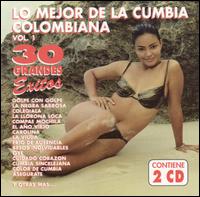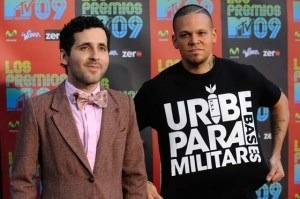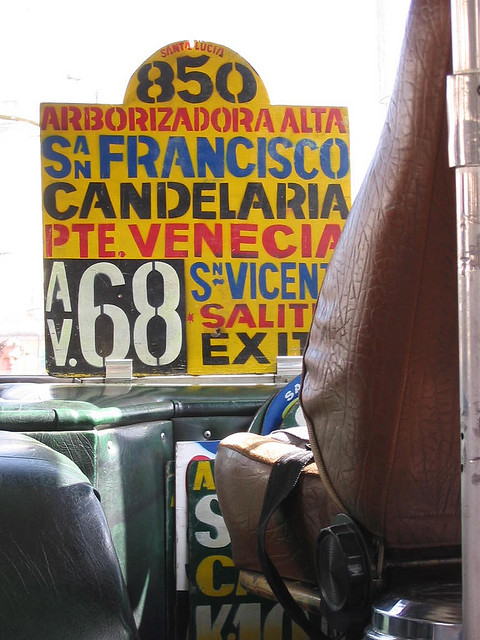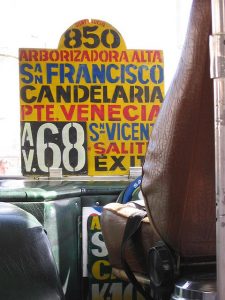- Teaching What You Thought You Knew (Part 4): El beísbol
- Teaching What You Thought You Knew (Part 3): Colombian Music, or how I learned to appreciate Hip Hop after 40
- Teaching What You Thought You Knew (Part 2): Colombian Film
- Teaching What You Thought You Knew (Part 1): Colombia
I have to admit it. Prior to this past semester, when I thought of Colombian Music the only things that sprang to mind was the music that used to be played (at full volume) in the Colombian busetas I used to take to get to school everyday (at white knuckle speeds), or songs that came in albums with scantily clad women that looked something like this:


A bit of searching about current popular Colombian music resulted in some of the usual pop suspects…Juanes, Shakira, Fanny Lú…but I was certain there had to be more and that I just needed to dig a little deeper. Plus, given the harsh reality (for me, at least) that the last time I was in Colombia my students had not yet been born….well, clearly, there was much I did not know, and perhaps because of my age and interests could not know but in order to be prepared to talk about music.
Cue the panic. This topic suddenly seemed to me more vast and impenetrable than finding examples of Colombian films that could serve as conversation starters, thought privilege, blog post catalysts. Was it my age? Was it fear? Was choosing music for the class to hear somehow too intensely teacher-centric … something I had always tried to avoid in my teaching (despite some students wants and wishes to the contrary)
And then I took in a deep breath and dropped my shoulders. Duh. Why should I be the only one doing all of the digging, I wondered? Heh, I was falling back on those teacher-centric patterns precisely at the time and about the content where it would have served me the least. ( note to readers: yes these are patterns and habits that inexplicably hard to break and re-map) Each semester, i reminded myself, when I teach this course, there are usually several students who want to listen to music with Spanish-language lyrics, better still, students who have brought back from their travels music they want to share or folks who study music and would love to talk about music. And indeed, this past semester, one of my students created a project for himself in which the outcome would be fr him to be able to converse with Spanish speakers about music (and be able to say more than “it’s good,” or “I like it.” With his help, we trundled forward into the wonderful unknown.
I had never heard of Calle 13, but thanks to my student, as well as a conversation with Paola Mendoza when she visited our class, we discovered the point of convergence between a Puerto Rican hip hop group and Colombia. Note the message on one of the t shirts that René (Residente) wore when he picked up one of his awards. And what it said about the connection between President Uribe, the Colombian paramilitary groups, and the desplazados .

As listened to one of their Grammy-winning songs – La Perla – and as I read the lyrics, it dawned on me that the spoken word cadence of hip hop could indeed be an interesting addition to class. Some teachers like to have their students to recite things outloud…it’s great practice intonation and pronunciation… So, I wondered, would hip hop be something we could try as speaking practice? If you had the lyrics in front of you, could you read along?
Thank goodness for YouTube, and for it’s users that like to merge text and audio:
Trying to sing/ talk along proved to be a formidable task and a challenging exercise, for myself included. Add to that the slang, jargon, modismos and the words that get a little bit re written in order to rhyme… mae instead of mamá, no me falta na’ vs nada…the discussions around the lyrics were terrific…
Which brings us back to Colombia. Thanks again to my students and to Paola, we discovered the afro-Colombian hip hop group Choquibtown from the Pacific coast and the state of Chocó in Colombia. After a few weeks of talking about violence and anguish in Colombia, Choquibtown’s song “Somos pacífico” was a wonderful way to regain our perspective… especially the last line of the song…
Por qué Colombia es más que coca, marihuana y café.
The video is a celebration of the language, the culture, the folklore, the dress, the food, the dance of the Chocó region.
I plan to start next semester where I left off: with Choquibtown, with hip hop. Not because I am necessarily comfortable with this or because I have a mastery of the material, but for actually the opposite reason entirely… This is challenging for me, for them, and by working on it together we can hopefully help each other to learn more.


hey, Barbara! i randomly checked my ObieMail today and saw that i had a “pingback” and got linked to this! i’m incredibly surprised and happy that you got so much out of what was just my “squirrel moment” and somewhat embarrassed that it’s so “out there” now haha. thank you for this, and good luck with the class next semester!
p.s. did you hear about our orlandito? he’s with los Gigantes now!
Hola Mateo,
Yep. It’s the “squirrel” moments like yours that sometimes provide the most amazing learning, and I was so happy to see it happen for you as it did and when it did. I learned so much from you, your blog post, and your enthusiasm for your topic this semester…thank you!
And yes, I know that our boy went to the gigantes. bummer. Nevertheless, I madecontact with the Reds…home of one of the other three Colombians. In the MLB, Edgar Rentería… We shall see..
Un abrazo…. B